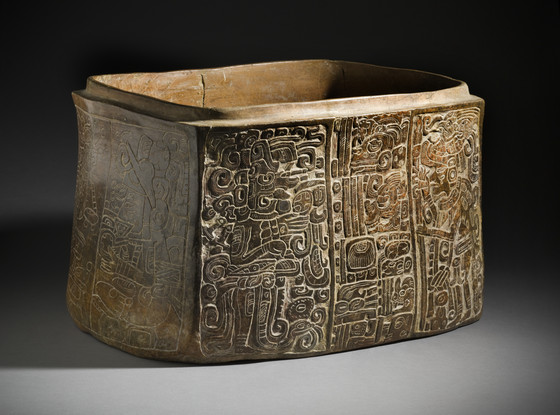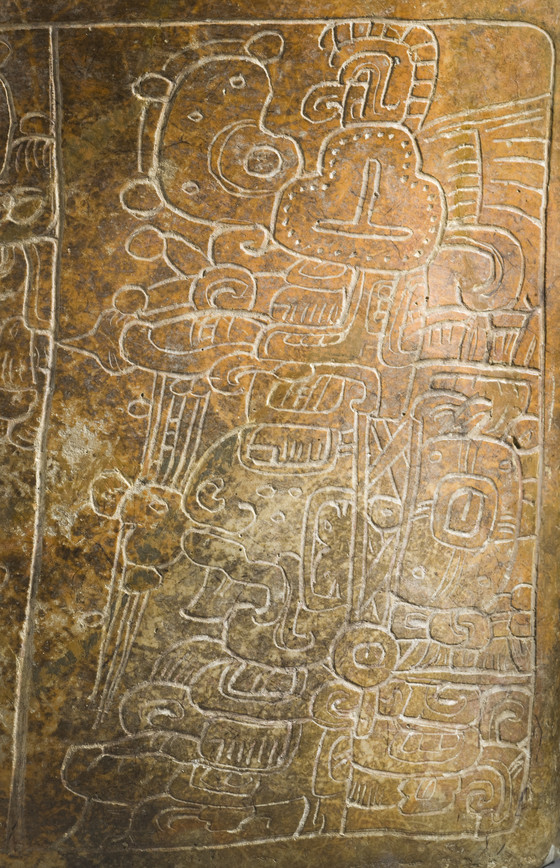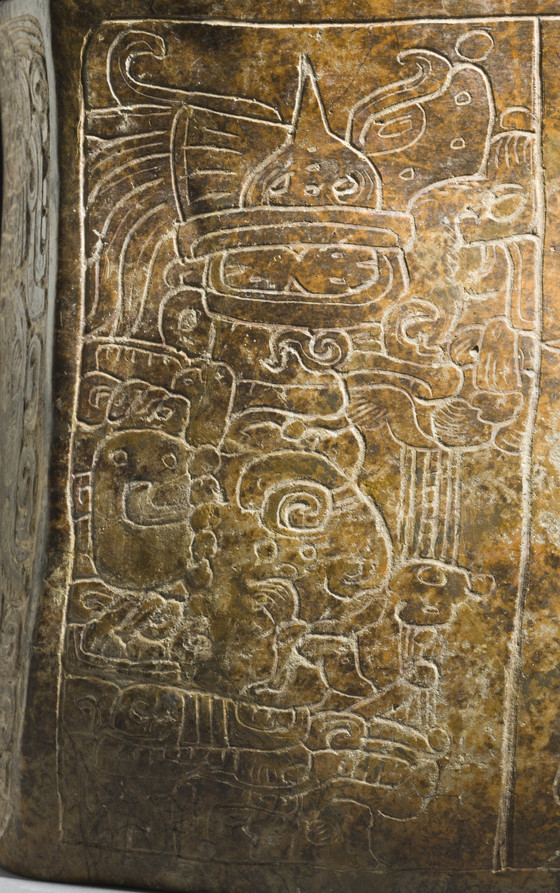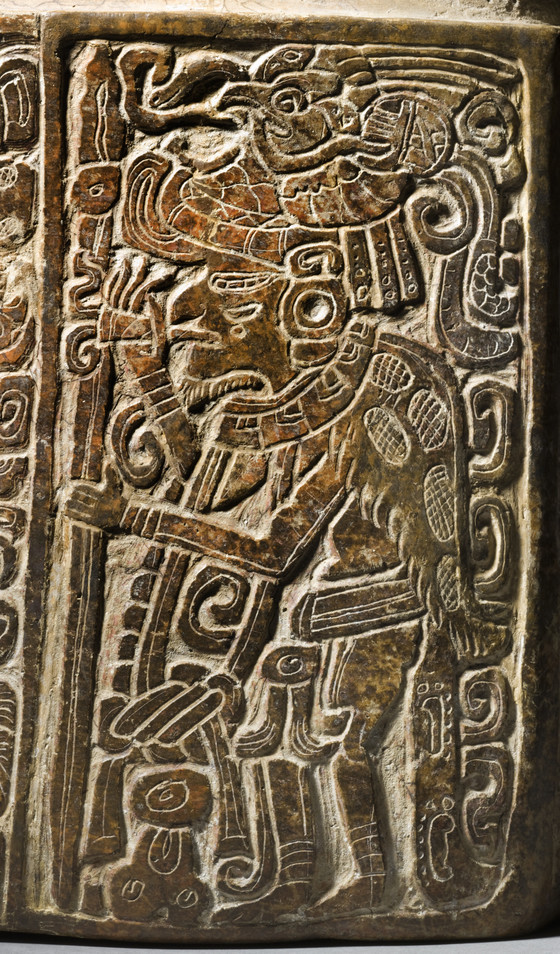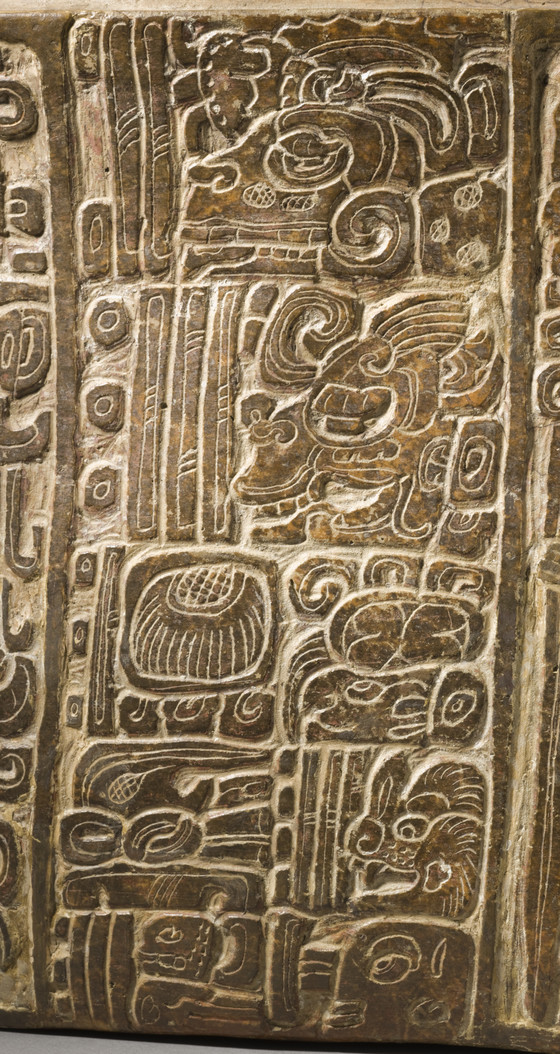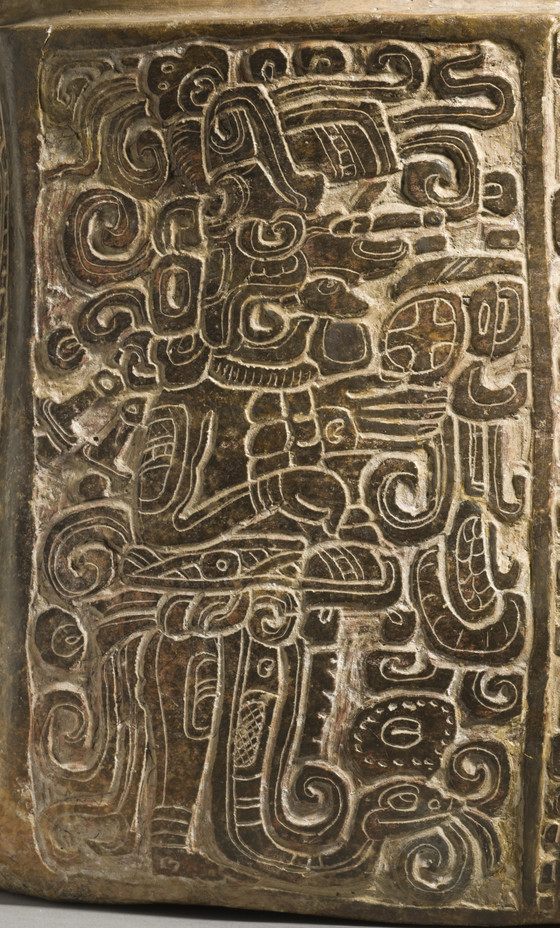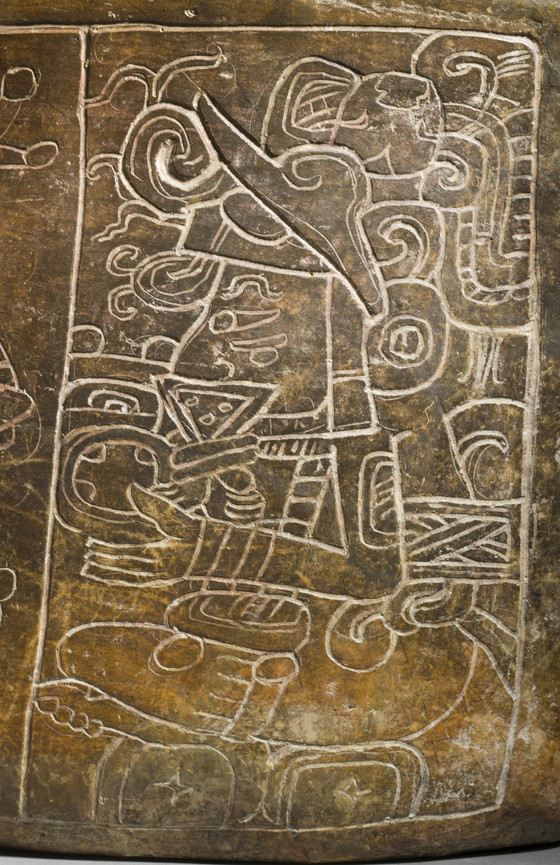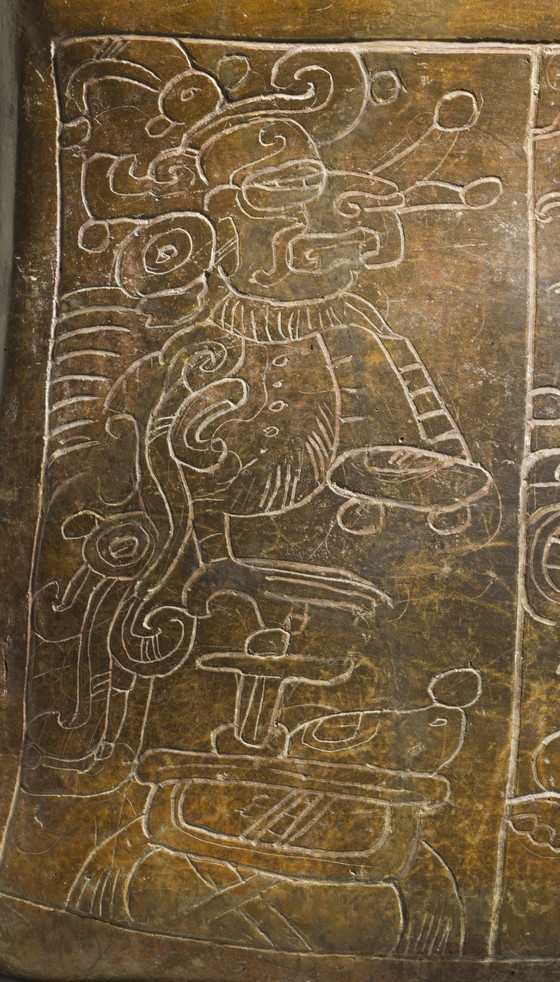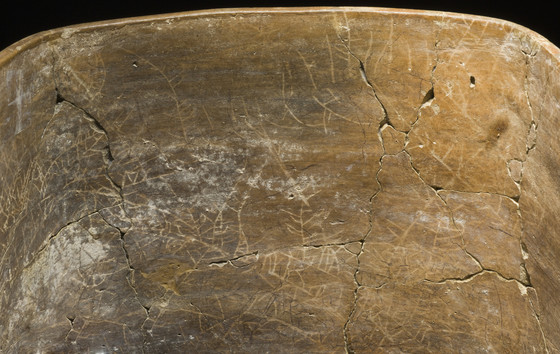This ornately decorated box, carved on the front panel and incised on its sides, is a tour de force of Maya ceramic art....
This ornately decorated box, carved on the front panel and incised on its sides, is a tour de force of Maya ceramic art. The front panel records the last part of a date in the Maya calendar, which can be reconstructed as occurring in the mid-fifth century, and the style of the carving is consistent with that date. The unusual scale of this box suggests that it may have held the valued possessions of an unnamed king, such as royal garments or books, protected within the sealed environment from insects and the humidity of the tropical climate.
The box is adorned with full-figure images of six of the most important supernatural beings from the Maya pantheon. Flanking the glyphic text on the front panel are the deeply carved figures of the serpent-footed K'awiil on the left and the patron of merchants, known simply as God L, on the right. K'awiil, with a smoking ax protruding from his forehead, is the patron of royal lineages. God L, who wears a jaguar-skin cape and large feathered headdress, carries a lance in his left hand and a smoking tube in his right.
Two figures are lightly incised into this panel. On the left, the Principal Bird Deity, patron of the earliest Maya kings, is depicted wearing its mirror necklace and perched in a bowl that holds jade and shell jewels. The adjacent seated figure is relatively unknown, although he wears a hat associated with hunters. He carries a name on his hat describing him as nen winik (mirror man), and oval signs on his body denoting mirrors mark him as a supernatural being. The cushion on which he sits spells out the word pop, or mat, a visual pun.
This panel depicts a pair of siblings, simply referred to as GI and GIII, who were renowned as the divine ancestors of the kings of the dynasty at Palenque. GI, associated with water or the sea, wears a bowl containing sacrificial implements on his head. GIII can be identified as the sun god, K'inich Ajaw, by his attributes, including the flower-shaped k'in hieroglyph on his cheek, which translates as sun or day.
Virginia Fields, Senior Curator Art of the Ancient Americas, 2008
More...
